Analysis of Canada Post's Monopoly Market Structure and Strategies
VerifiedAdded on 2022/08/29
|13
|800
|23
Report
AI Summary
This report provides an analysis of the Canada Post Corporation, focusing on its monopoly power within the domestic mailing system. It examines the market structure, emphasizing the company's dominance and universal service system. The report delves into pricing strategies, highlighting the price-cap system and how prices are determined based on marginal cost and revenue. It discusses both positive and negative externalities associated with Canada Post's operations, considering consumer and producer surplus, as well as deadweight loss. Government intervention, particularly concerning inflation and revenue allocation, is also addressed. The report offers recommendations for Canada Post, such as maintaining affordable pricing, improving service quality, and expanding customer reach. Finally, it concludes by suggesting a focus on expanding e-post services to maintain revenue in the face of declining letter mail demand. The report utilizes references to support its analysis and findings.
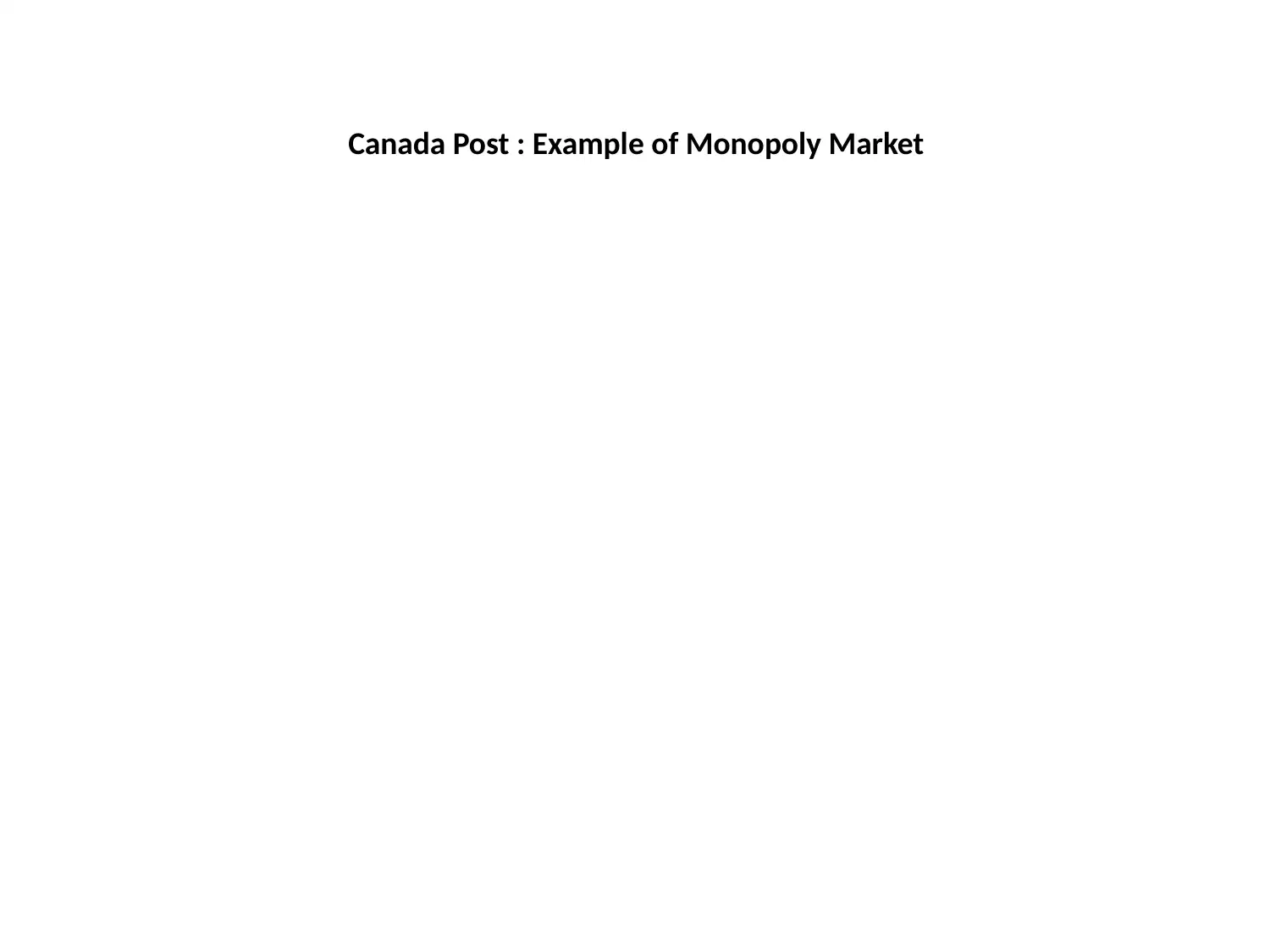
Canada Post : Example of Monopoly Market
Paraphrase This Document
Need a fresh take? Get an instant paraphrase of this document with our AI Paraphraser
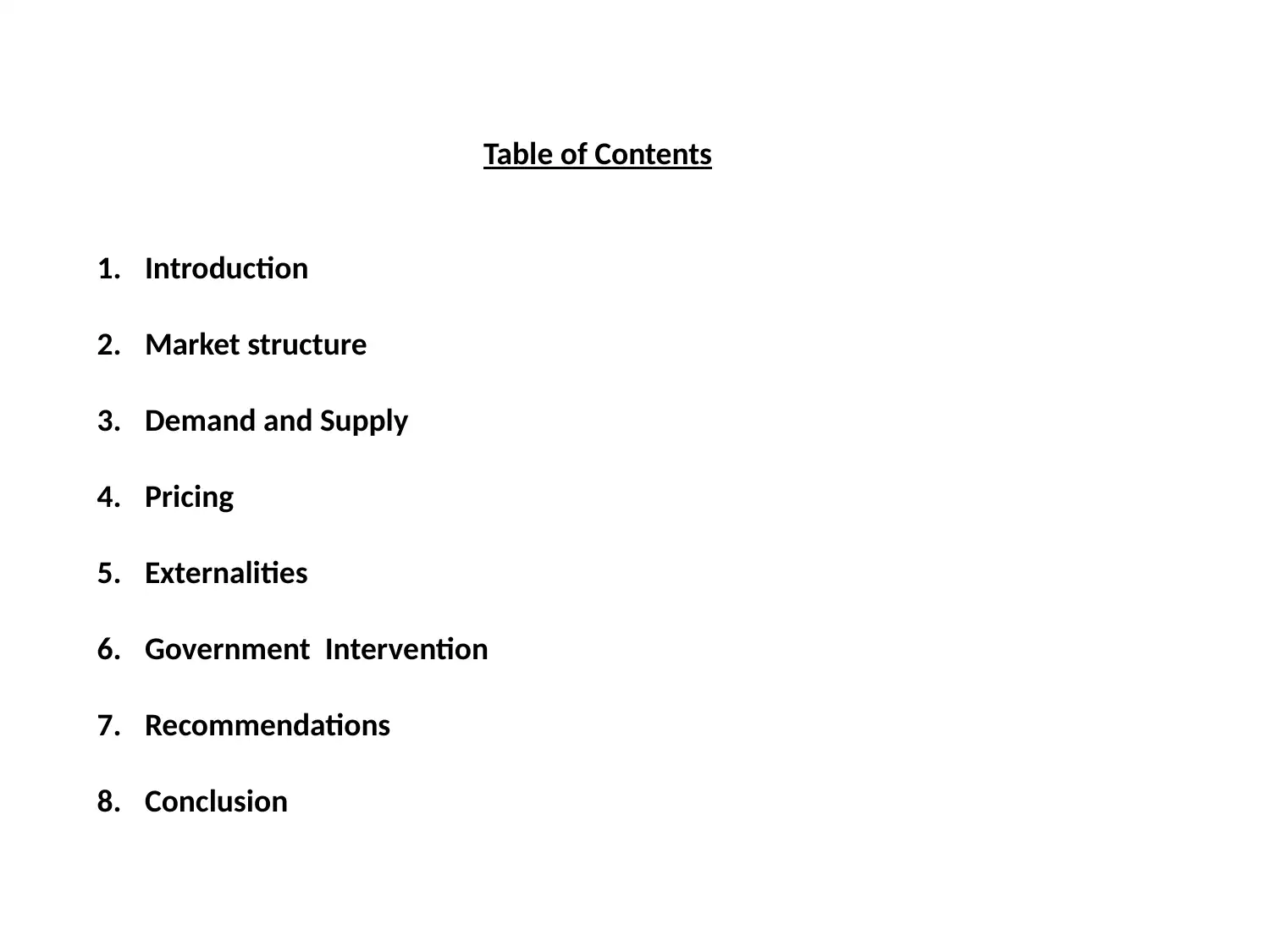
Table of Contents
1. Introduction
2. Market structure
3. Demand and Supply
4. Pricing
5. Externalities
6. Government Intervention
7. Recommendations
8. Conclusion
1. Introduction
2. Market structure
3. Demand and Supply
4. Pricing
5. Externalities
6. Government Intervention
7. Recommendations
8. Conclusion
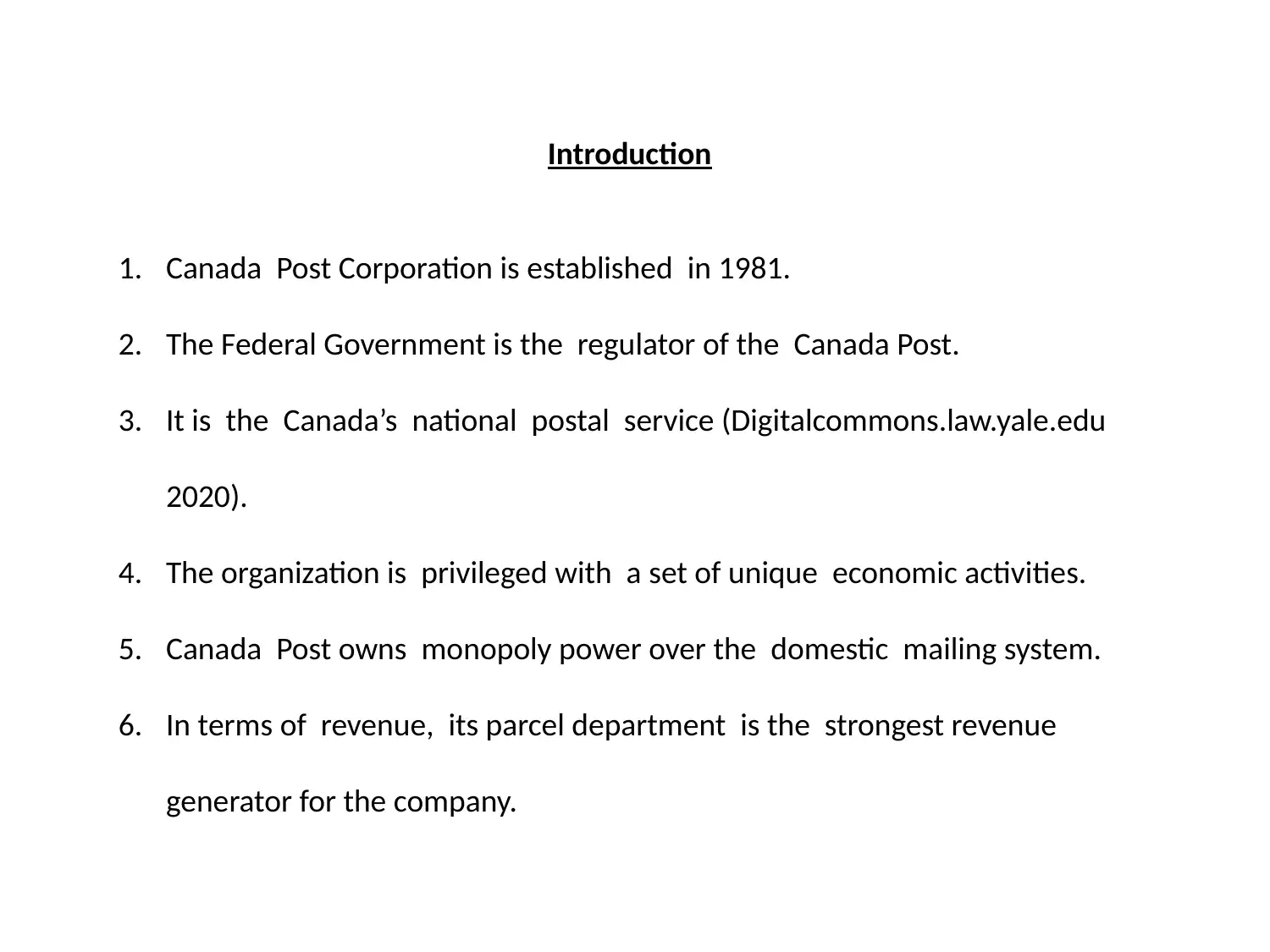
Introduction
1. Canada Post Corporation is established in 1981.
2. The Federal Government is the regulator of the Canada Post.
3. It is the Canada’s national postal service (Digitalcommons.law.yale.edu
2020).
4. The organization is privileged with a set of unique economic activities.
5. Canada Post owns monopoly power over the domestic mailing system.
6. In terms of revenue, its parcel department is the strongest revenue
generator for the company.
1. Canada Post Corporation is established in 1981.
2. The Federal Government is the regulator of the Canada Post.
3. It is the Canada’s national postal service (Digitalcommons.law.yale.edu
2020).
4. The organization is privileged with a set of unique economic activities.
5. Canada Post owns monopoly power over the domestic mailing system.
6. In terms of revenue, its parcel department is the strongest revenue
generator for the company.
⊘ This is a preview!⊘
Do you want full access?
Subscribe today to unlock all pages.

Trusted by 1+ million students worldwide
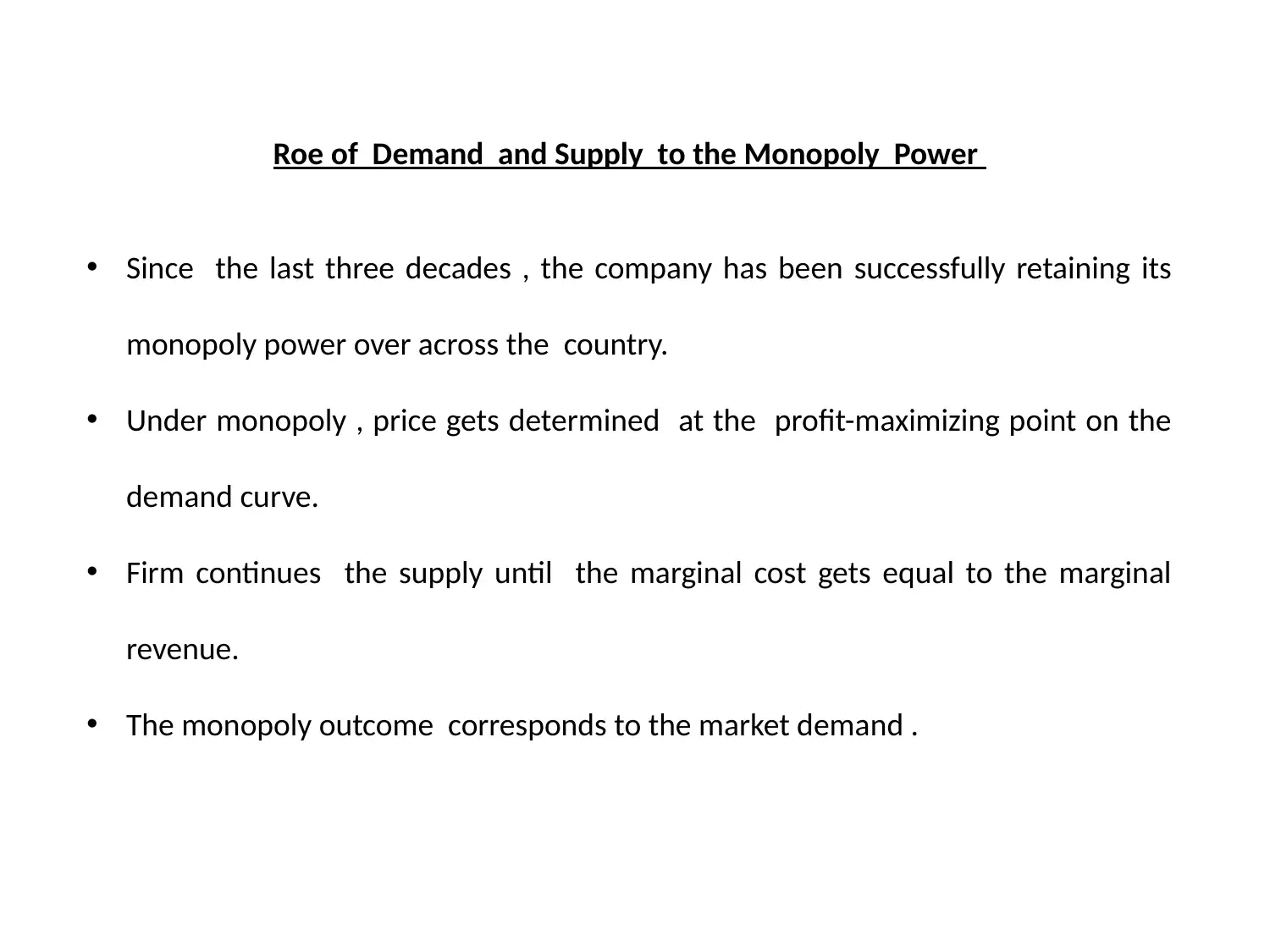
Roe of Demand and Supply to the Monopoly Power
• Since the last three decades , the company has been successfully retaining its
monopoly power over across the country.
• Under monopoly , price gets determined at the profit-maximizing point on the
demand curve.
• Firm continues the supply until the marginal cost gets equal to the marginal
revenue.
• The monopoly outcome corresponds to the market demand .
• Since the last three decades , the company has been successfully retaining its
monopoly power over across the country.
• Under monopoly , price gets determined at the profit-maximizing point on the
demand curve.
• Firm continues the supply until the marginal cost gets equal to the marginal
revenue.
• The monopoly outcome corresponds to the market demand .
Paraphrase This Document
Need a fresh take? Get an instant paraphrase of this document with our AI Paraphraser
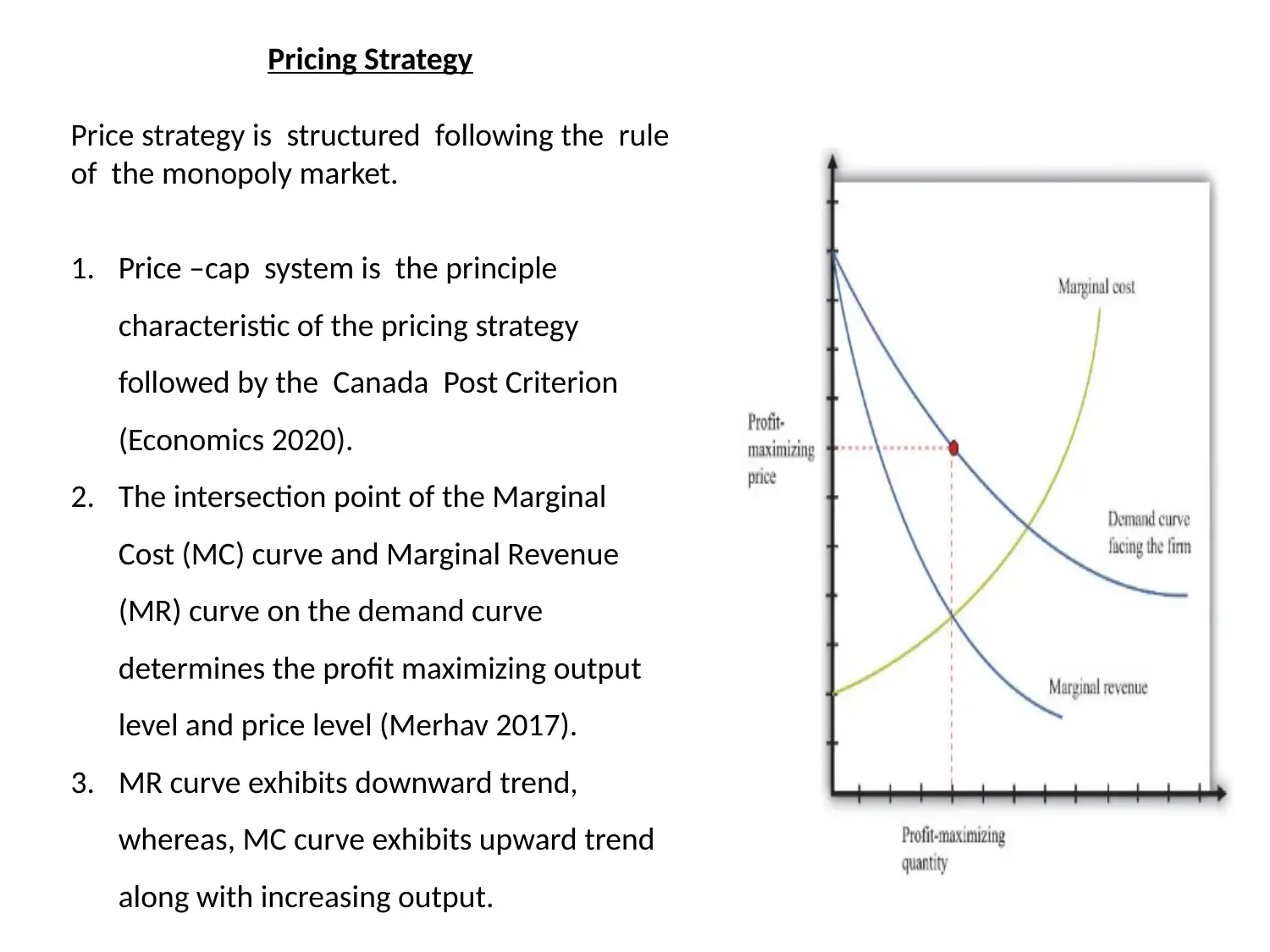
Pricing Strategy
Price strategy is structured following the rule
of the monopoly market.
1. Price –cap system is the principle
characteristic of the pricing strategy
followed by the Canada Post Criterion
(Economics 2020).
2. The intersection point of the Marginal
Cost (MC) curve and Marginal Revenue
(MR) curve on the demand curve
determines the profit maximizing output
level and price level (Merhav 2017).
3. MR curve exhibits downward trend,
whereas, MC curve exhibits upward trend
along with increasing output.
Price strategy is structured following the rule
of the monopoly market.
1. Price –cap system is the principle
characteristic of the pricing strategy
followed by the Canada Post Criterion
(Economics 2020).
2. The intersection point of the Marginal
Cost (MC) curve and Marginal Revenue
(MR) curve on the demand curve
determines the profit maximizing output
level and price level (Merhav 2017).
3. MR curve exhibits downward trend,
whereas, MC curve exhibits upward trend
along with increasing output.
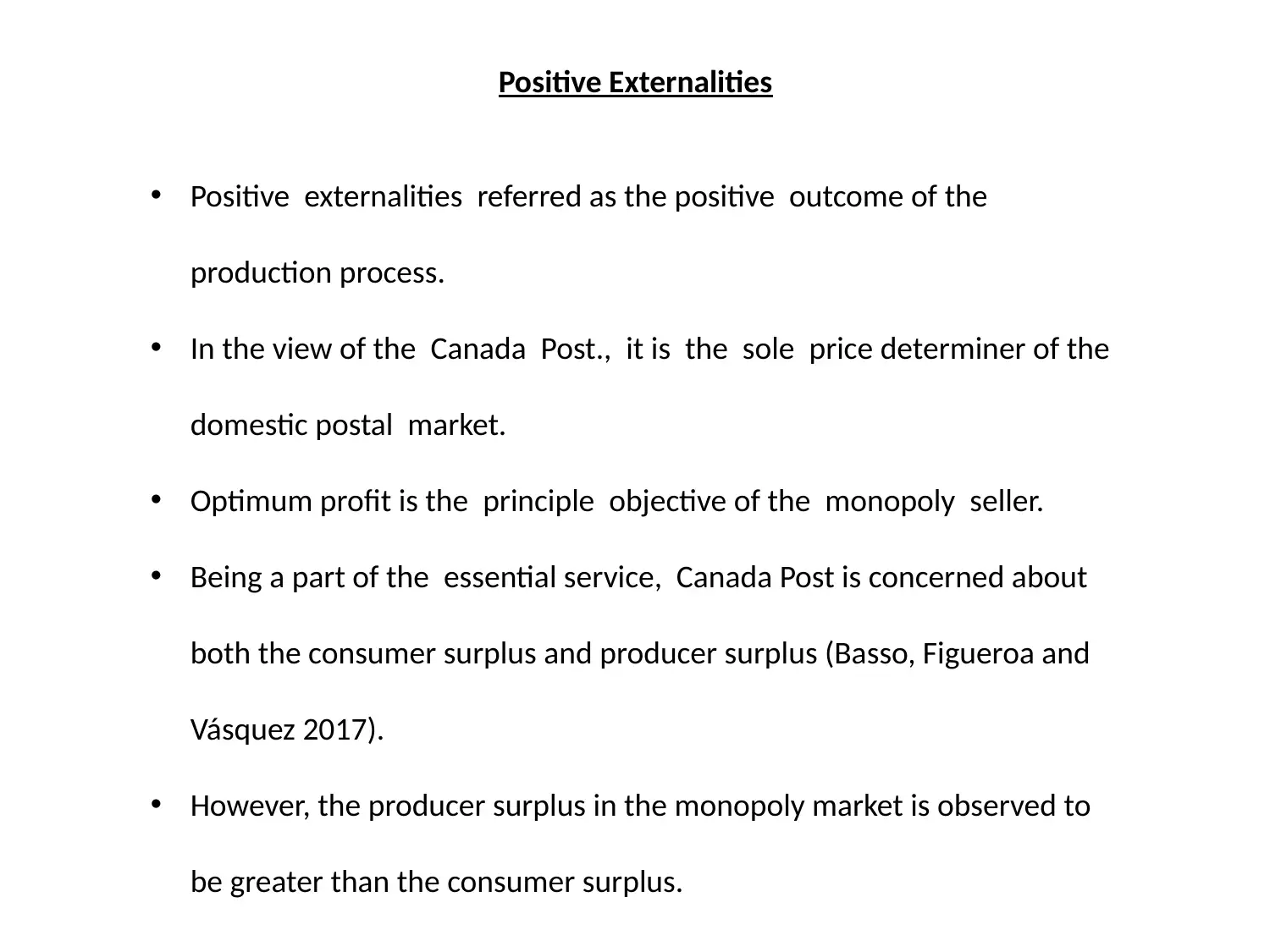
Positive Externalities
• Positive externalities referred as the positive outcome of the
production process.
• In the view of the Canada Post., it is the sole price determiner of the
domestic postal market.
• Optimum profit is the principle objective of the monopoly seller.
• Being a part of the essential service, Canada Post is concerned about
both the consumer surplus and producer surplus (Basso, Figueroa and
Vásquez 2017).
• However, the producer surplus in the monopoly market is observed to
be greater than the consumer surplus.
• Positive externalities referred as the positive outcome of the
production process.
• In the view of the Canada Post., it is the sole price determiner of the
domestic postal market.
• Optimum profit is the principle objective of the monopoly seller.
• Being a part of the essential service, Canada Post is concerned about
both the consumer surplus and producer surplus (Basso, Figueroa and
Vásquez 2017).
• However, the producer surplus in the monopoly market is observed to
be greater than the consumer surplus.
⊘ This is a preview!⊘
Do you want full access?
Subscribe today to unlock all pages.

Trusted by 1+ million students worldwide
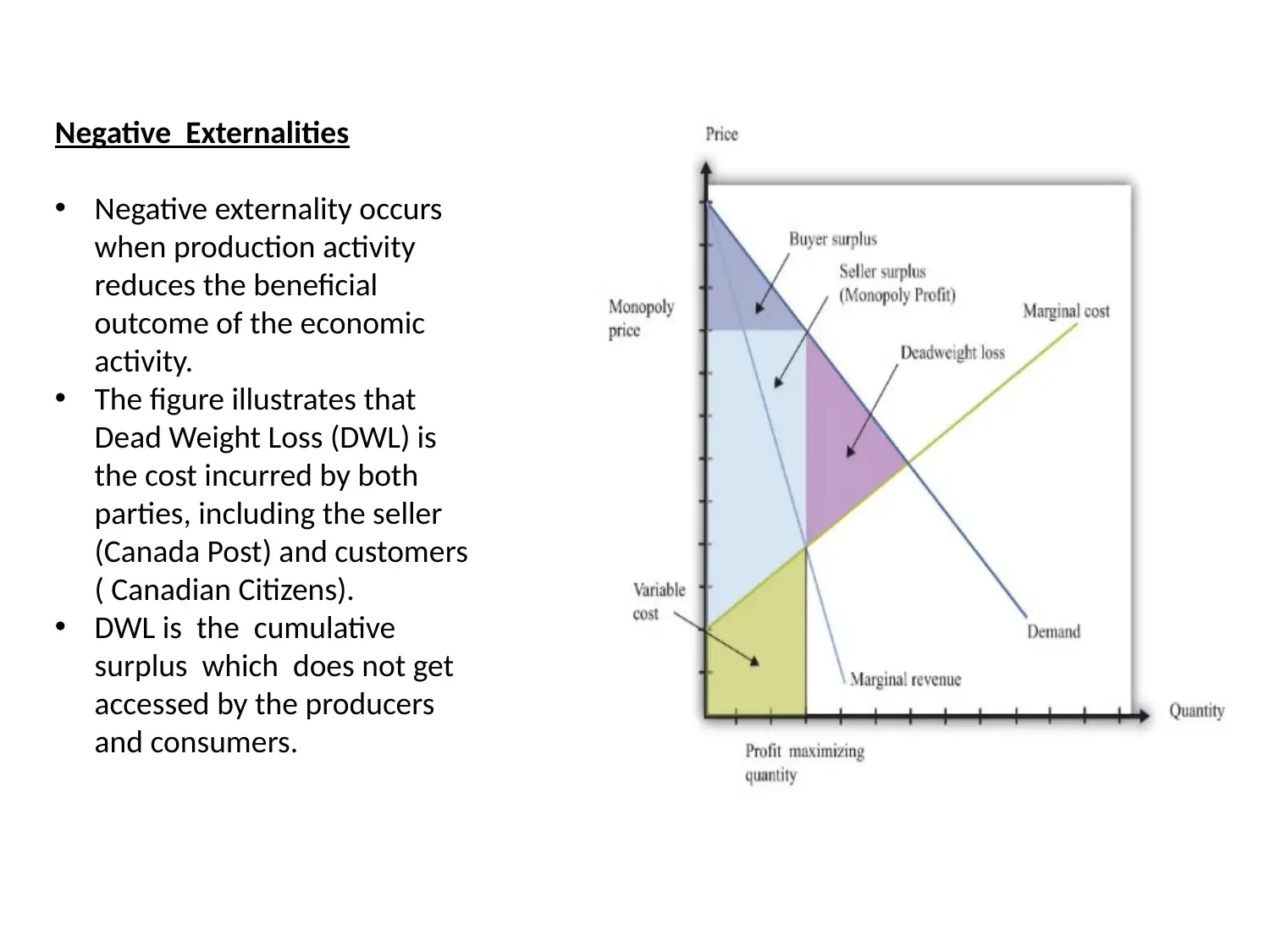
Negative Externalities
• Negative externality occurs
when production activity
reduces the beneficial
outcome of the economic
activity.
• The figure illustrates that
Dead Weight Loss (DWL) is
the cost incurred by both
parties, including the seller
(Canada Post) and customers
( Canadian Citizens).
• DWL is the cumulative
surplus which does not get
accessed by the producers
and consumers.
• Negative externality occurs
when production activity
reduces the beneficial
outcome of the economic
activity.
• The figure illustrates that
Dead Weight Loss (DWL) is
the cost incurred by both
parties, including the seller
(Canada Post) and customers
( Canadian Citizens).
• DWL is the cumulative
surplus which does not get
accessed by the producers
and consumers.
Paraphrase This Document
Need a fresh take? Get an instant paraphrase of this document with our AI Paraphraser
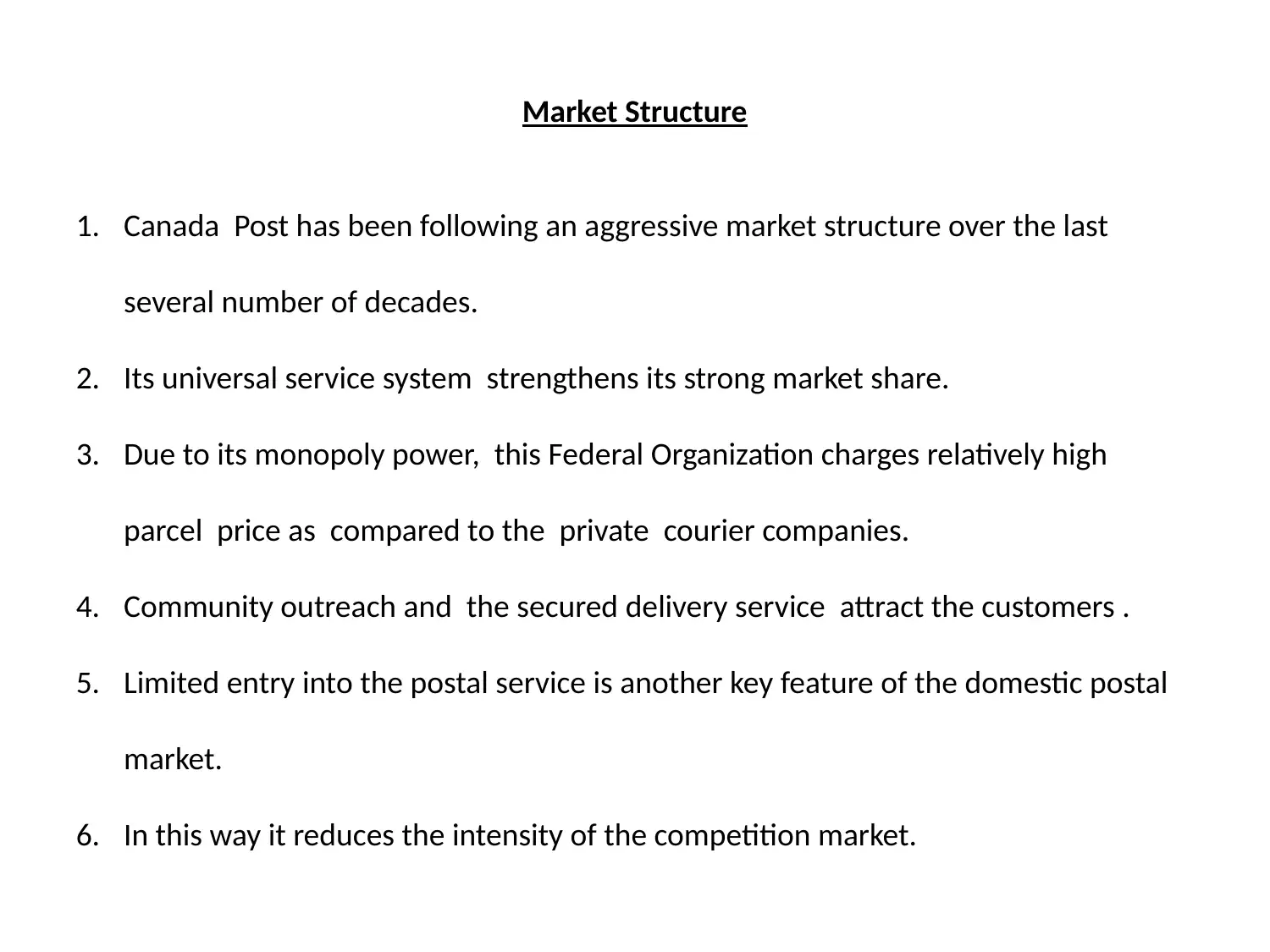
Market Structure
1. Canada Post has been following an aggressive market structure over the last
several number of decades.
2. Its universal service system strengthens its strong market share.
3. Due to its monopoly power, this Federal Organization charges relatively high
parcel price as compared to the private courier companies.
4. Community outreach and the secured delivery service attract the customers .
5. Limited entry into the postal service is another key feature of the domestic postal
market.
6. In this way it reduces the intensity of the competition market.
1. Canada Post has been following an aggressive market structure over the last
several number of decades.
2. Its universal service system strengthens its strong market share.
3. Due to its monopoly power, this Federal Organization charges relatively high
parcel price as compared to the private courier companies.
4. Community outreach and the secured delivery service attract the customers .
5. Limited entry into the postal service is another key feature of the domestic postal
market.
6. In this way it reduces the intensity of the competition market.
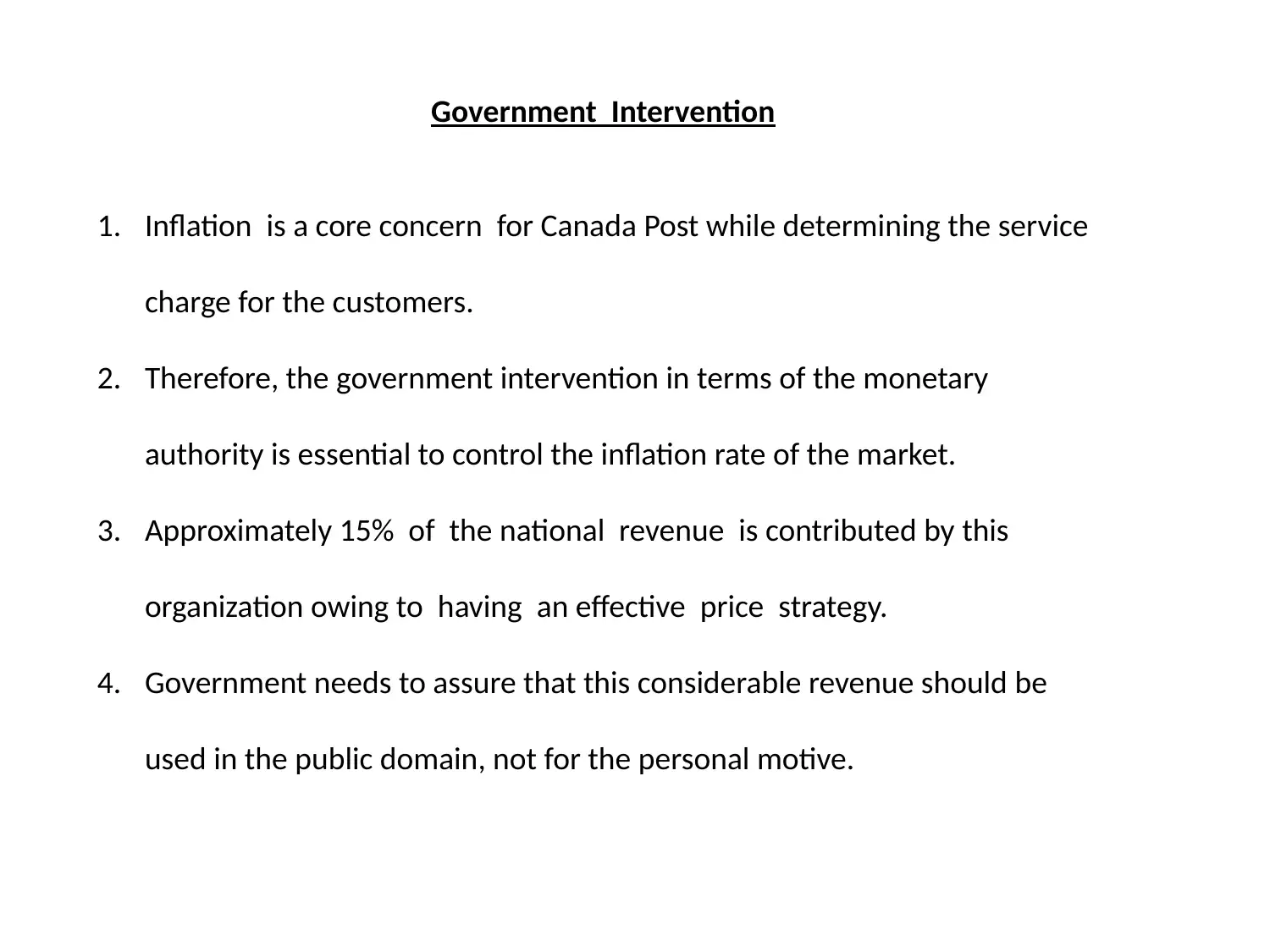
Government Intervention
1. Inflation is a core concern for Canada Post while determining the service
charge for the customers.
2. Therefore, the government intervention in terms of the monetary
authority is essential to control the inflation rate of the market.
3. Approximately 15% of the national revenue is contributed by this
organization owing to having an effective price strategy.
4. Government needs to assure that this considerable revenue should be
used in the public domain, not for the personal motive.
1. Inflation is a core concern for Canada Post while determining the service
charge for the customers.
2. Therefore, the government intervention in terms of the monetary
authority is essential to control the inflation rate of the market.
3. Approximately 15% of the national revenue is contributed by this
organization owing to having an effective price strategy.
4. Government needs to assure that this considerable revenue should be
used in the public domain, not for the personal motive.
⊘ This is a preview!⊘
Do you want full access?
Subscribe today to unlock all pages.

Trusted by 1+ million students worldwide
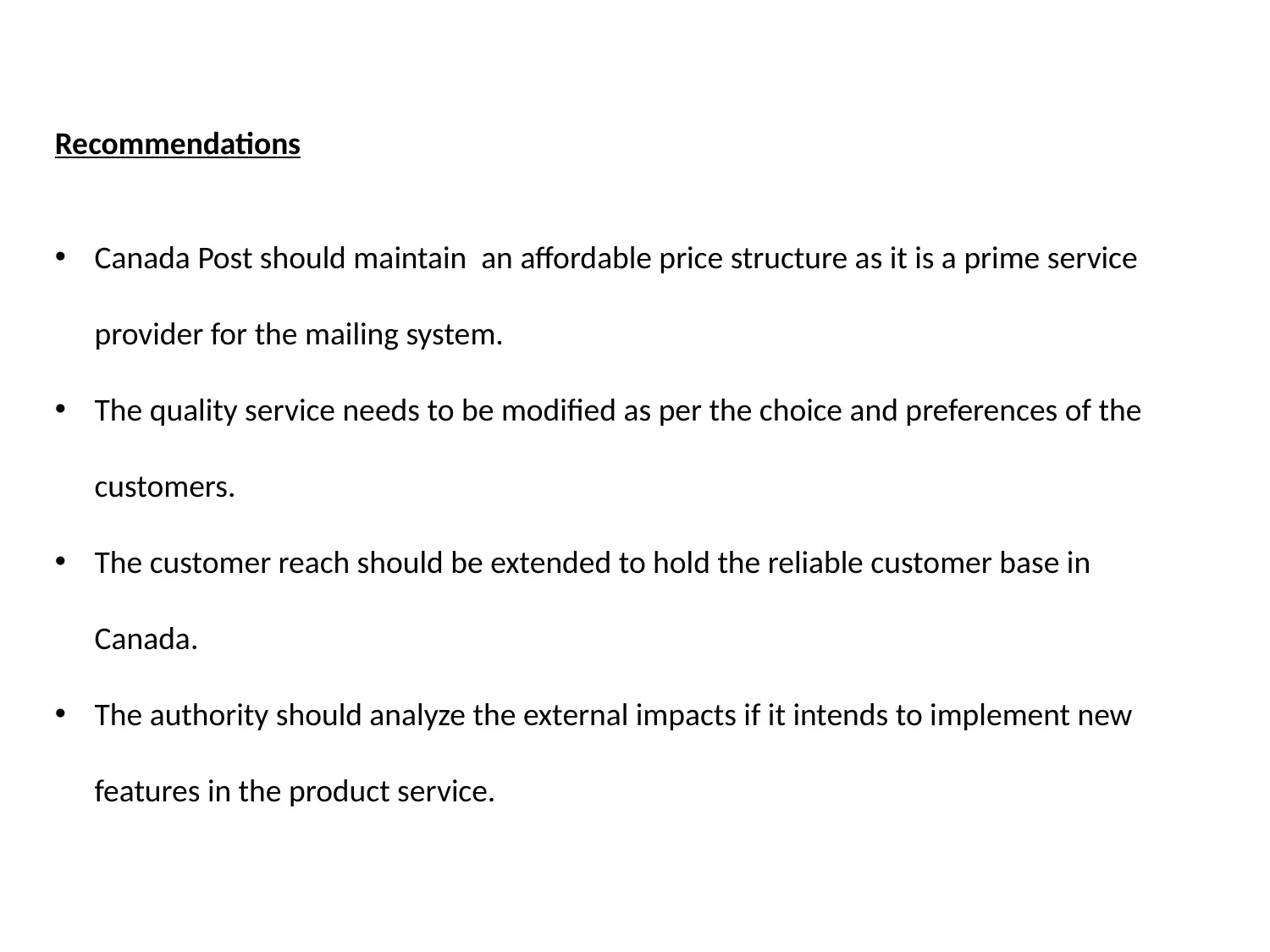
Recommendations
• Canada Post should maintain an affordable price structure as it is a prime service
provider for the mailing system.
• The quality service needs to be modified as per the choice and preferences of the
customers.
• The customer reach should be extended to hold the reliable customer base in
Canada.
• The authority should analyze the external impacts if it intends to implement new
features in the product service.
• Canada Post should maintain an affordable price structure as it is a prime service
provider for the mailing system.
• The quality service needs to be modified as per the choice and preferences of the
customers.
• The customer reach should be extended to hold the reliable customer base in
Canada.
• The authority should analyze the external impacts if it intends to implement new
features in the product service.
Paraphrase This Document
Need a fresh take? Get an instant paraphrase of this document with our AI Paraphraser
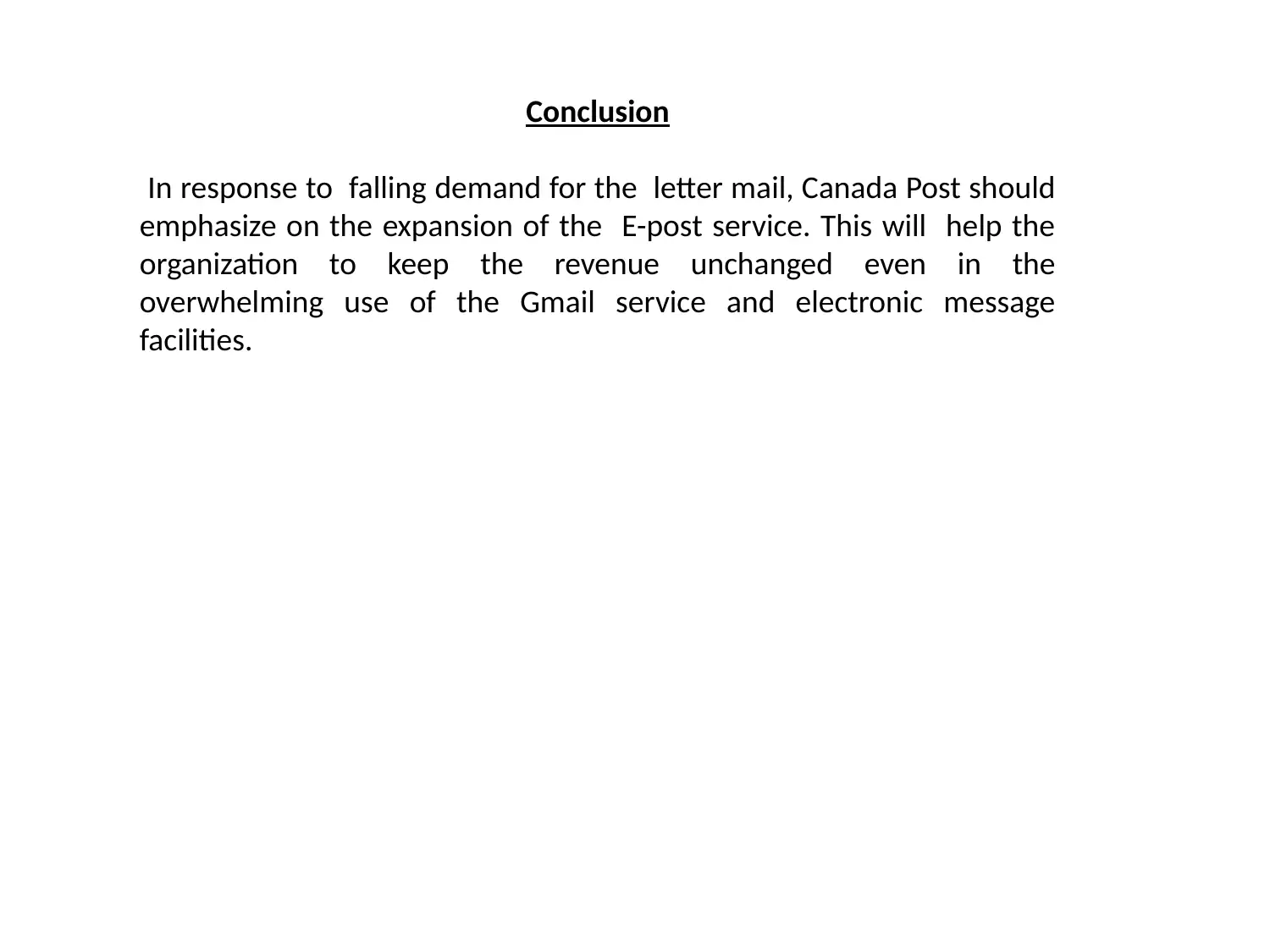
Conclusion
In response to falling demand for the letter mail, Canada Post should
emphasize on the expansion of the E-post service. This will help the
organization to keep the revenue unchanged even in the
overwhelming use of the Gmail service and electronic message
facilities.
In response to falling demand for the letter mail, Canada Post should
emphasize on the expansion of the E-post service. This will help the
organization to keep the revenue unchanged even in the
overwhelming use of the Gmail service and electronic message
facilities.
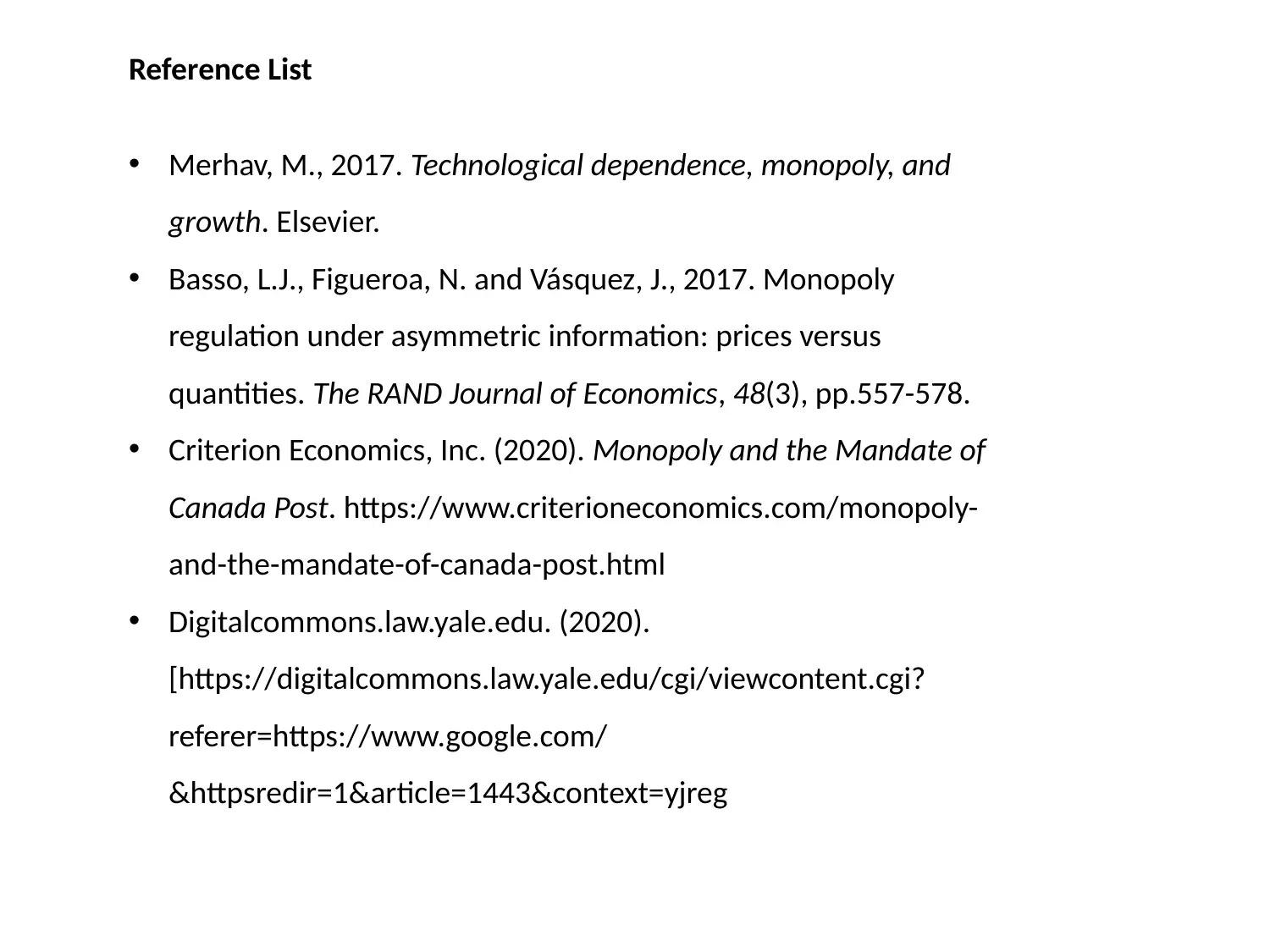
Reference List
• Merhav, M., 2017. Technological dependence, monopoly, and
growth. Elsevier.
• Basso, L.J., Figueroa, N. and Vásquez, J., 2017. Monopoly
regulation under asymmetric information: prices versus
quantities. The RAND Journal of Economics, 48(3), pp.557-578.
• Criterion Economics, Inc. (2020). Monopoly and the Mandate of
Canada Post. https://www.criterioneconomics.com/monopoly-
and-the-mandate-of-canada-post.html
• Digitalcommons.law.yale.edu. (2020).
[https://digitalcommons.law.yale.edu/cgi/viewcontent.cgi?
referer=https://www.google.com/
&httpsredir=1&article=1443&context=yjreg
• Merhav, M., 2017. Technological dependence, monopoly, and
growth. Elsevier.
• Basso, L.J., Figueroa, N. and Vásquez, J., 2017. Monopoly
regulation under asymmetric information: prices versus
quantities. The RAND Journal of Economics, 48(3), pp.557-578.
• Criterion Economics, Inc. (2020). Monopoly and the Mandate of
Canada Post. https://www.criterioneconomics.com/monopoly-
and-the-mandate-of-canada-post.html
• Digitalcommons.law.yale.edu. (2020).
[https://digitalcommons.law.yale.edu/cgi/viewcontent.cgi?
referer=https://www.google.com/
&httpsredir=1&article=1443&context=yjreg
⊘ This is a preview!⊘
Do you want full access?
Subscribe today to unlock all pages.

Trusted by 1+ million students worldwide
1 out of 13
Related Documents
Your All-in-One AI-Powered Toolkit for Academic Success.
+13062052269
info@desklib.com
Available 24*7 on WhatsApp / Email
![[object Object]](/_next/static/media/star-bottom.7253800d.svg)
Unlock your academic potential
Copyright © 2020–2025 A2Z Services. All Rights Reserved. Developed and managed by ZUCOL.




